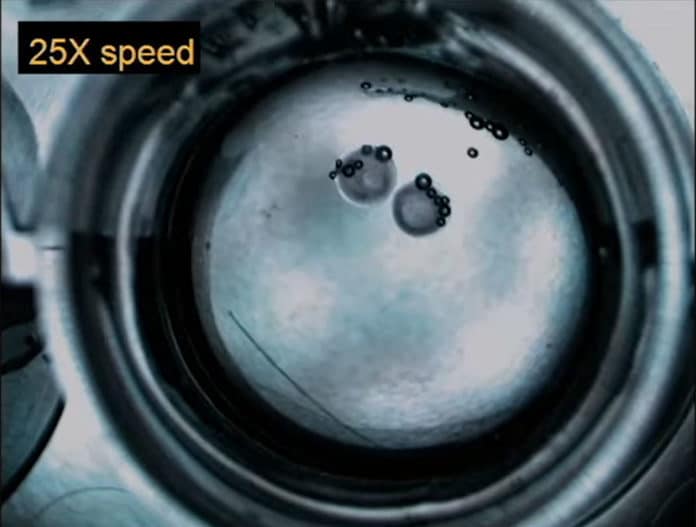A team of researchers from the Department of Energy’s Lawrence Berkeley National Laboratory (Berkeley Lab) and the University of Massachusetts Amherst has built “water-walking” liquid robots that, like tiny submarines, dive below water to retrieve precious chemicals and then surface to deliver chemicals ashore again and again.
The technology is the first self-powered aqueous robot that can work autonomously and continuously without needing electrical inputs. It has the potential as an automated chemical synthesis or drug delivery system for pharmaceuticals.
“We have broken a barrier in designing a liquid robotic system that can operate autonomously by using chemistry to control an object’s buoyancy,” said senior author Tom Russell, a visiting faculty scientist and professor of polymer science and engineering from the University of Massachusetts Amherst.
This isn’t the first time “liquibots” have been demonstrated. In previous studies, other researchers demonstrated liquibots that autonomously perform a task, but just once; and some liquibots can perform a task continuously but need electricity to keep on running. In contrast, “we don’t have to provide electrical energy because our liquibots get their power or ‘food’ chemically from the surrounding media,” Russell explained.
The liquibots look like little open sacks and are just 2 millimeters in diameter. Because they are denser than the solution, the liquibots cluster in the middle of the solution, where they fill up with select chemicals. This triggers a reaction that generates oxygen bubbles, which like little balloons, lift the liquibot up to the surface. Another reaction pulls the liquibots to the rim of a container, where they “land” and offload their cargo.
The liquid robots go back and forth, like the pendulum of a clock, and can run continuously as long as there is “food” in the system.
An array of liquibots could do multiple jobs at the same time, depending on their formulation. For example, some liquibots could detect different types of gas in the environment, while others react to specific types of chemicals. The technology may also enable autonomous, continuous robotic systems that screen small chemical samples for clinical applications or drug discovery and drug synthesis applications.
As the next step, the researchers plan to investigate how to scale up the technology for larger systems and explore how it would work on solid surfaces.
